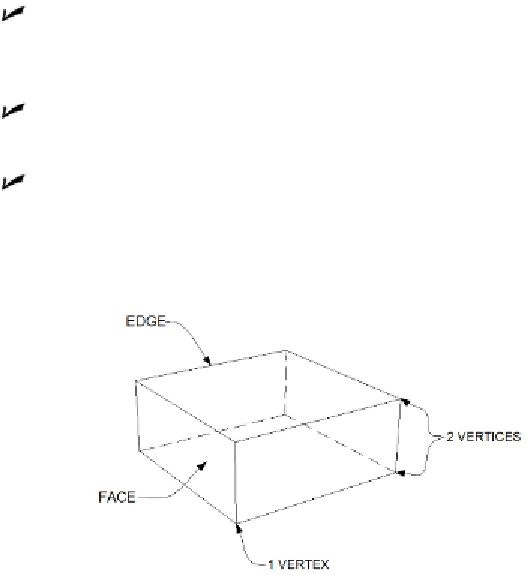Graphics Programs Reference
In-Depth Information
(Non-Uniform Rational B-Splines, if you must know). Mesh surfaces tend to be a
little imprecise; they're most often used for 3D animation or terrain modeling.
NURBS surfaces are far more precise (as you'd expect with a name like that!) and
are frequently used in product design. Due to space limitations, I don't cover
either type of surface modeling in
AutoCAD 2012 For Dummies
.
Solid models:
Have edges, surfaces and mass. Solid models are the most complex
type (although precise surface models can be more difficult to construct). Solid
models can be assigned physical material properties such as steel or aluminum,
and so mass, centers of rotation, etc can be calculated by the computer and dis-
played visually.
While surface and solid models are created and modified differently, the 3D objects that
make up the models are made up of the same
subobjects
. The subobjects that a 3D ob-
ject is made up of are
Vertex:
The 3D equivalent of an AutoCAD point object. Vertices are defined by a
single X,Y,Z coordinate, can exist anywhere in 3D space and are located where the
edges of a 3D object meet.
Edge:
The boundary of a face, as defined by two X,Y,Z coordinates, one at each ver-
tex.
Face:
The surface area bounded by three or more edges.
Figure 21-1 shows a simple 3D object — a six-sided cubic shape created with AutoCAD's
BOX command — and its subobjects.
Figure 21-1:
Subobjects of a 3D object.



